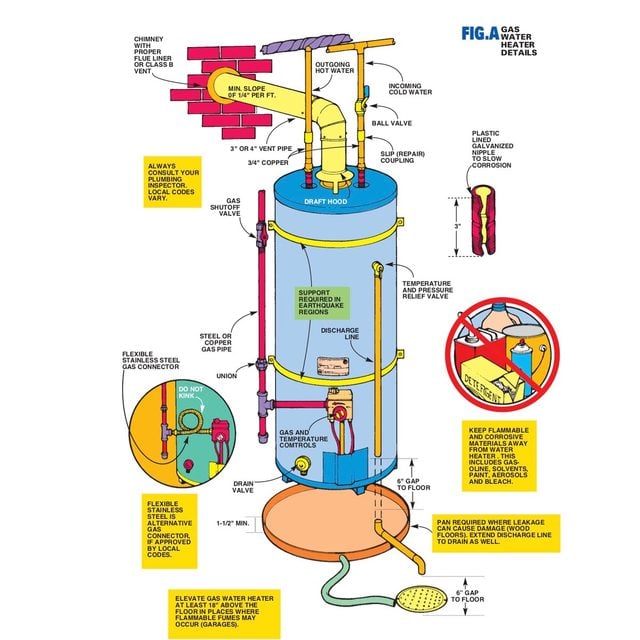Reliable and affordable water heater installation in Yorba Linda for your needs
Reliable and affordable water heater installation in Yorba Linda for your needs
Blog Article
DIY Hot Water Heater Installation: Crucial Actions for Success
When considering a Do it yourself water heating unit installation, it is essential to come close to the task with a systematic frame of mind, as the process entails a number of essential actions that can considerably influence both safety and security and effectiveness. Picking the proper water heating system for your certain needs is simply the beginning; preparing the installment area and understanding the essential devices and materials are similarly vital.
Selecting the Right Water Heating Unit
When picking a water heater, it is necessary to take into consideration several vital elements to make sure ideal performance and performance - water heater installation. First of all, evaluate the type of hot water heater that best fits your demands. Options consist of tankless, tank, and heatpump water heaters, each offering distinctive benefits in regards to power effectiveness and space demands
A larger family may require an unit with a greater gallon capability or a tankless system that can supply continual warm water. Each power kind has ramifications for setup expenses and long-lasting power costs.
Energy effectiveness is one more crucial aspect. Seek devices with a high Power Factor (EF) rating, as these versions eat much less energy and can substantially reduce utility bills. In addition, look for guarantees and brand reliability, as these can indicate the durability and maintenance needs of the system. By thoroughly assessing these factors, you can pick a hot water heater that aligns with your home's particular needs, making certain comfort and efficiency for years ahead.
Tools and Materials Needed
Efficiently installing a hot water heater requires not only the ideal choice of device yet additionally the suitable devices and products. Prior to starting your DIY task, ensure you have a detailed list of products to facilitate a smooth installation process.
Crucial devices include a monkey wrench, flexible pliers, and a screwdriver set (both flathead and Phillips), which will aid you handle different installations and links. Furthermore, a drill with proper bits is essential for mounting braces or making any type of required holes. For safety and security, a voltage tester is essential, particularly when taking care of electrical water heating systems.
You will certainly additionally require a versatile water supply line, which can be either braided stainless steel or PVC, depending on your preferences and local codes. By collecting these products and devices in advance, you established the phase for an effective water heating unit installation.
Planning For Installation
Prior to starting the setup of your water heater, it is vital to examine the setup site to ensure it fulfills all needed demands. Start by confirming that the location is well-ventilated, especially for gas hot water heater, to stop the buildup of hazardous gases. Look for the availability of essential links, consisting of water supply lines and electric outlets, ensuring they are in good condition and effectively located.

Furthermore, check the existing pipes and electrical systems to establish if upgrades or repairs are required prior to setup. This proactive strategy not only makes certain compliance with neighborhood building regulations however also boosts the durability and performance of the hot pop over to this web-site water heater. Last but not least, gather all called for licenses, if necessary, to prevent lawful complications later. Proper prep work establishes the stage for a smooth installation procedure and helps stop unforeseen concerns.
Step-by-Step Installment Process
With the prep work total and all required assessments performed, the next phase includes the step-by-step installment of your water heating unit. For tank-type water heaters, connect the cold water supply line to the inlet, typically noted in blue, and the hot water line to the electrical outlet, typically designated in red.
Next, safeguard the temperature and stress safety valve, which is necessary for safety. Affix the discharge pipe to this shutoff, directing it in the direction of the flooring or an appropriate drainage location. For electric designs, attach the power supply by removing the wires and safeguarding them to the heating unit's terminals according to the supplier's directions.
If you are mounting a gas hot water heater, guarantee the gas line is attached properly and examine for leakages making use of a soap service. Nevertheless connections are made, fill up the container with water prior to transforming on the power or gas supply. Finally, permit the hot water heater to get to the preferred temperature level and check for any leaks around all links.
Ensuring Safety and Efficiency
Routinely making sure safety and security and efficiency throughout the installation and operation of your water heating system is crucial for optimal performance and durability. Begin by selecting a suitable location that adheres to regional building ordinance and offers adequate air flow. Ensure that the area is totally free from combustible products and has enough room for upkeep and inspections.

After setup, conduct regular checks on the unit to spot leaks, deterioration, or uncommon sounds. Set the thermostat to a safe temperature, generally around 120 ° F, to avoid hot and enhance energy efficiency. Insulate pipelines to minimize heat loss, which contributes to lower power expenses.
Final Thought
In conclusion, effective DIY water heating unit installation hinges on mindful preparation and execution. Choosing the appropriate water heating unit, preparing the installment area, and following a systematic setup process are vital actions.
When thinking about a Do it yourself water heating system setup, it is essential to come close to the job with a methodical attitude, as the procedure includes several important actions that can considerably affect both safety and security and efficiency.Before starting the installation of your water heating unit, it is critical to evaluate the setup website to guarantee it fulfills all needed requirements. For tank-type water heaters, link the chilly water supply line to the inlet, commonly marked in blue, and the warm water line to the outlet, typically assigned in visit this site right here red.Consistently guaranteeing security and effectiveness throughout the setup and operation of your water heating unit is critical for optimum efficiency and longevity. Selecting the ideal water heating unit, preparing the setup area, and complying with a methodical setup process are important actions.
Report this page